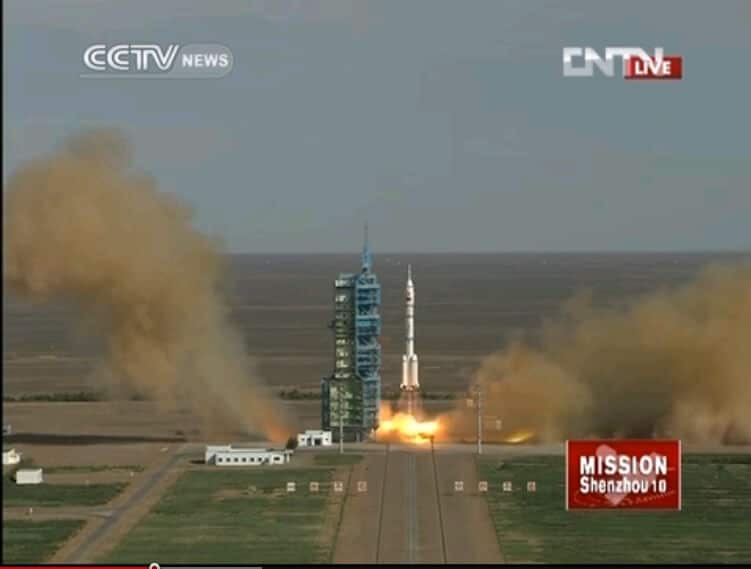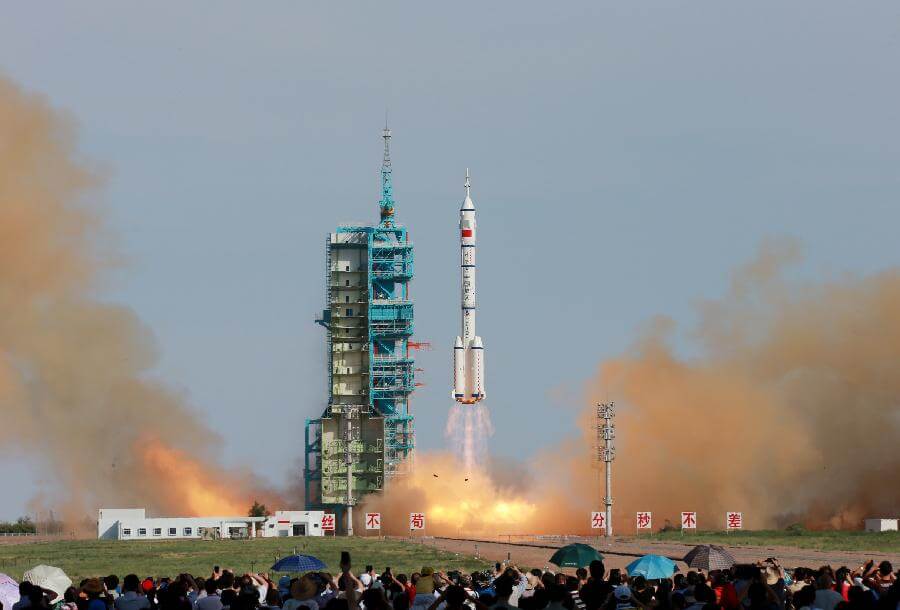The commander of the spacecraft is an astronaut who is in space for the second time, and the team also includes a teacher who will teach lessons from space to her students

China today successfully launched its fifth manned spacecraft, Shenzhou 10, carrying a crew of three people - two men and one woman, announced Zhang Yuxia, commander-in-chief of the Chinese manned space program.
Shenzhou 10 was launched into orbit on an improved Long March 2F rocket that took off from the Jiuquan Satellite Launch Center in northwest China at 17:38 local time - 12:38 noon Israel time and entered its preparatory orbit a few minutes later into low Earth orbit .
The farewell ceremony that took place a few hours before the launch was also attended by Chinese President Xi Jinping who had returned shortly before from the US and wished success to the three astronauts (technonauts). "The team members carry the new dream of the Chinese state and they represent the inspiration for the Chinese people to go into space," said Zi who watched the launch process in Jiuquan
The mission is expected to continue for 15 days, during which the Shenzhou 10 spacecraft will be docked at the Tiangong-1 Experimental Orbital Laboratory twice, once in an automatic process and the second time - manually.
The team includes commander Nie Haisheng, Zhang Xiaoguang and teacher Wang Yaping, the second woman China sends into space, who will give a live lecture from space to a group of students on the ground.
The purpose of the mission is to further test the technologies of docking in a space station and supporting the stay of astronauts in space, as well as some new technologies related to the construction of a space station. Tiangong-1 has been in orbit for 620 days and in about three months it is scheduled to end its service. The lab is considered China's first step to operating a permanent space station around 2020 and becoming the third country in the world to do so.

There is concern that the conditions in some of Tiangong-1's components will not be in good condition due to the long time in space and the use of the docking mechanisms four times for docking capability tests.
Nie Haisheng, the commander of the team that is already in space for the second time, said that this time the mission will be longer, there will be more experiments compared to his previous mission in 2006. "These are new challenges and greater risks," Nie said in interviews with the Chinese media yesterday. However, he expects to go to the space laboratory "My colleague and I worked in the Chinese house in space" he said.
.

4 תגובות
At the beginning of the article it says Shenzhou 11 and later Shenzhou 10
what's right ?
This is not accurate, the replacement - the backup - of Christa McAuliffe took off on one of the last shuttle flights
https://www.hayadan.org.il/barbara-morgan-pre-flight-0808079/
The last time they sent a teacher into space it didn't end well:
http://he.wikipedia.org/wiki/%D7%90%D7%A1%D7%95%D7%9F_%D7%9E%D7%A2%D7%91%D7%95%D7%A8%D7%AA_%D7%94%D7%97%D7%9C%D7%9C_%D7%A6'%D7%9C%D7%A0%D7%92'%D7%A8